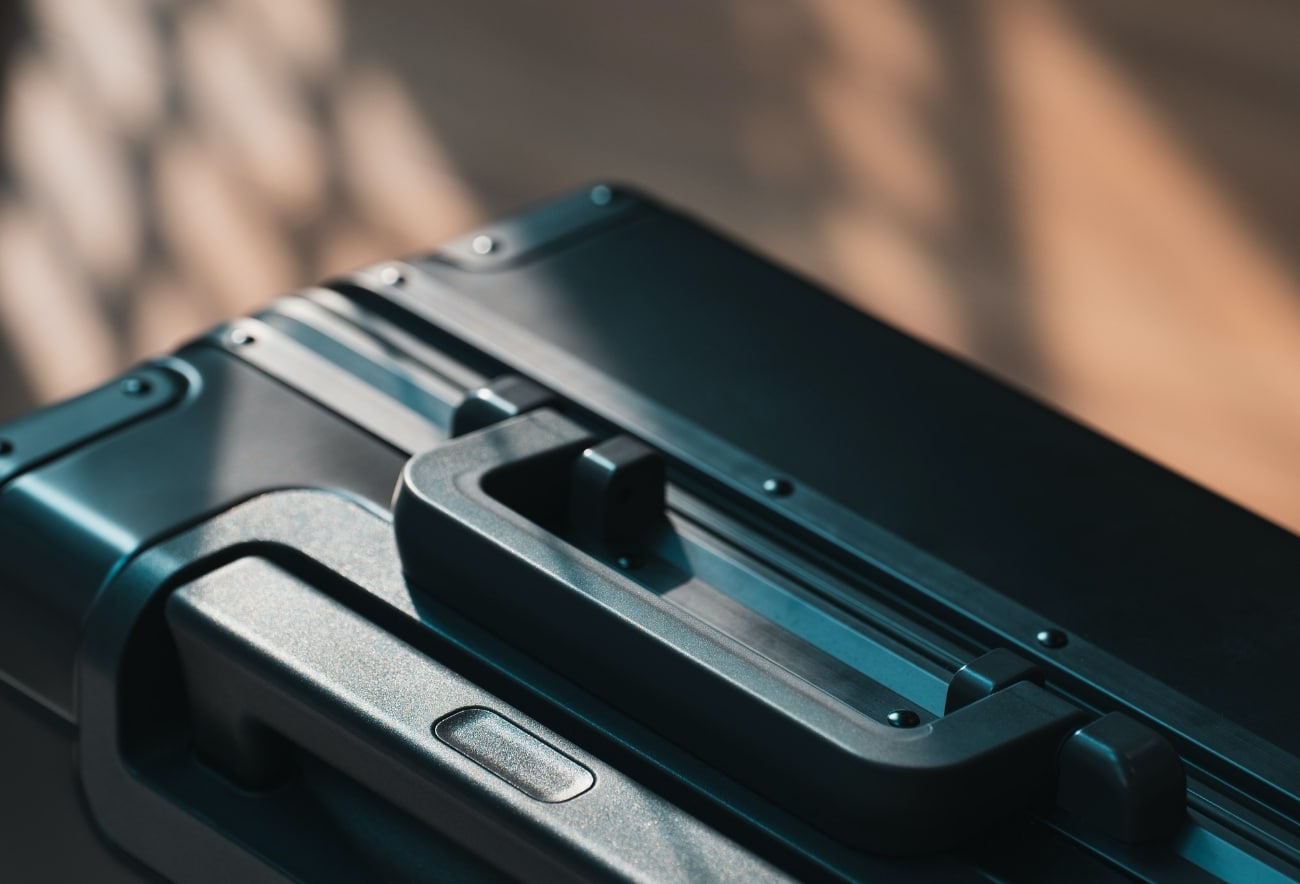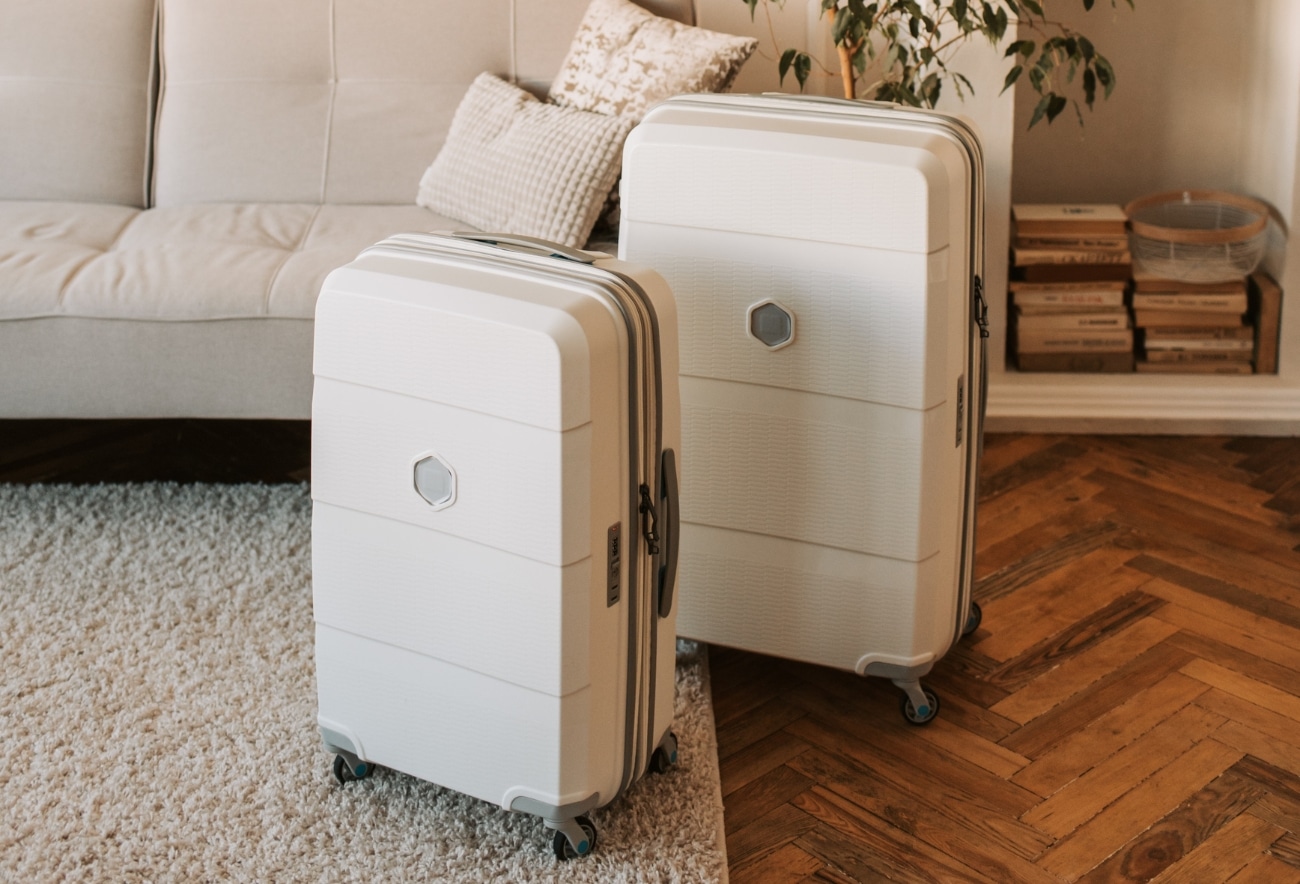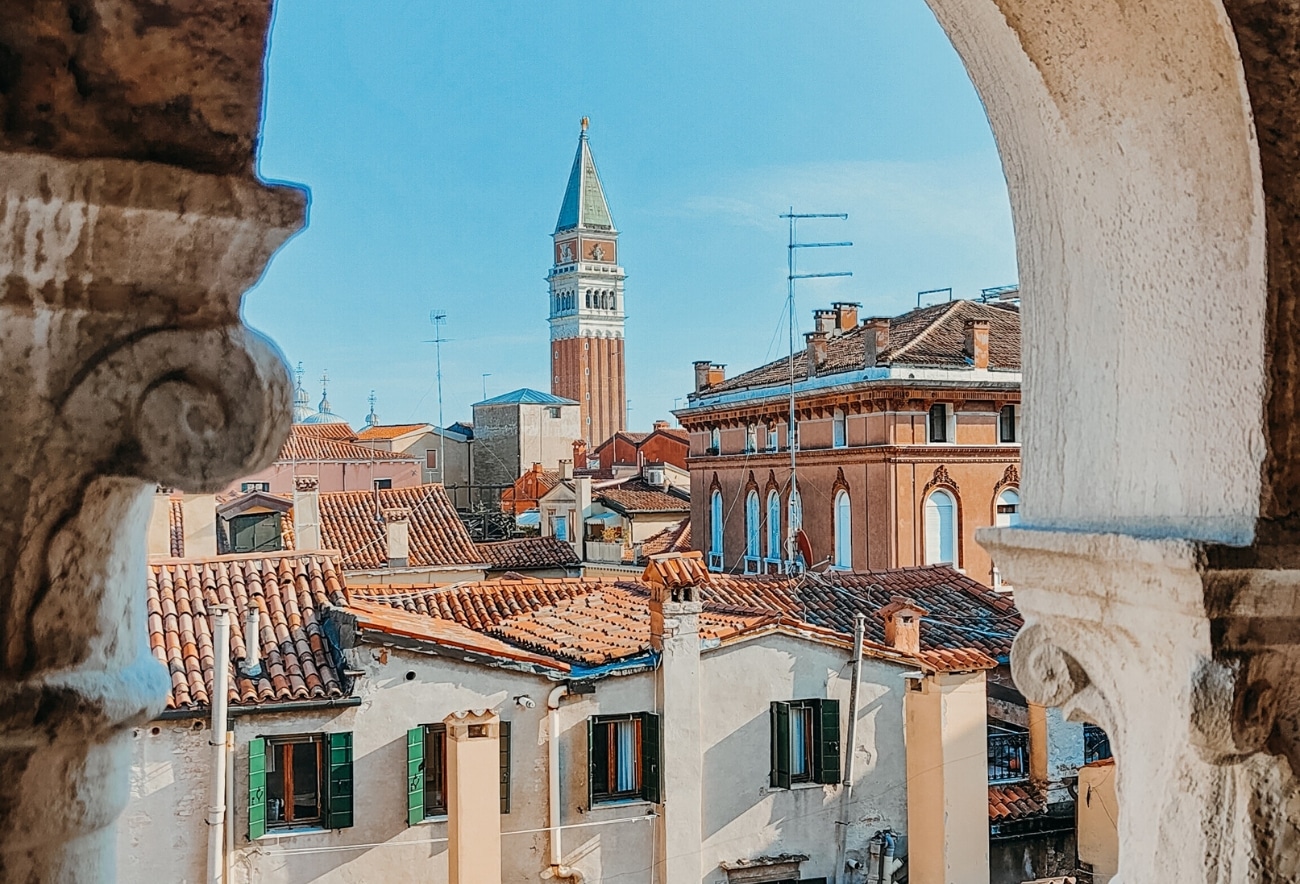
The Ultimate Guide to Slow Travel so You Can Stop and Smell the Roses
An uncommon guide to slow travel including the life-changing benefits, tips on how to slow down, and helpful resources to guide you on your slow travel journey.
In our fast-paced world, it’s easy to get caught up in the rat race and forget what’s important. That’s why more and more people are joining the slow travel movement as a way to unplug from the hustle and bustle and connect with the world around them. But what exactly is slow travel and what are its benefits?
Keep reading to find out everything you need to know about the slow travel movement and how you can better immerse yourself in your next travel destination.
Slow Travel Guide
(Quick Links)
What is Slow Travel?
Slow travel is a philosophy of traveling that emphasizes taking the time to connect with local people, cultures, food, and music. It’s about immersing oneself in a destination, savoring your surroundings, and taking the time to really experience a place rather than rushing through it.
Slow tourism simply means finding the right travel pace for you and taking time to experience a place for longer periods of time whether it’s two weeks in a destination or two months. Applying the slow-movement philosophy to travel is gaining popularity as people seek more meaningful and sustainable ways to explore the world.
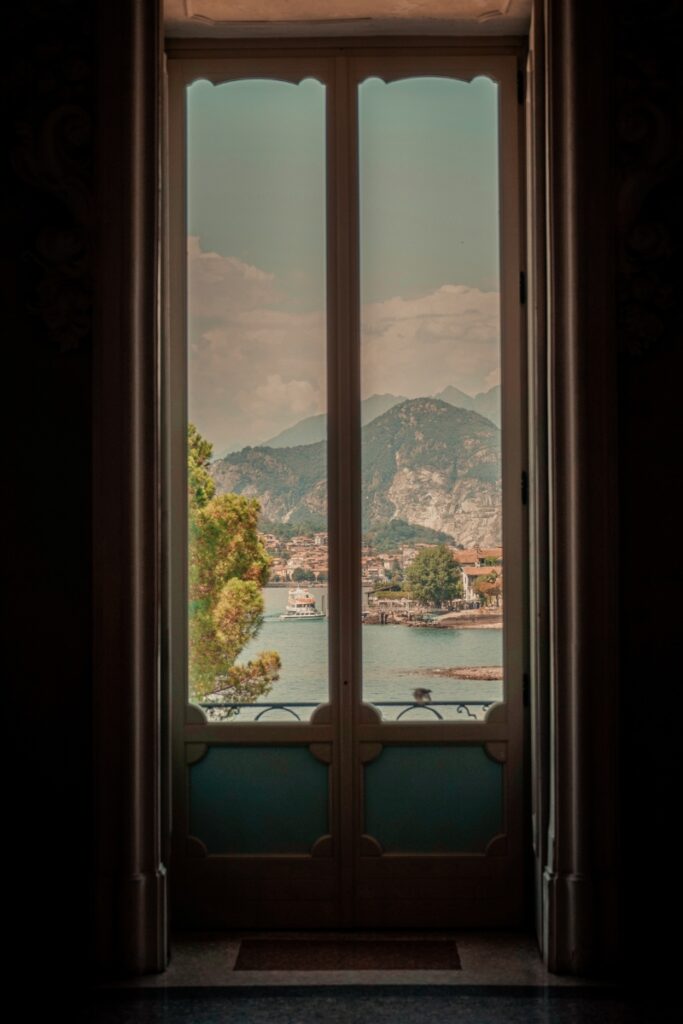
Benefits of Slow Travel
There are many benefits of slow travel, both for individuals and for society as a whole. When you take the time to slow down, enjoy the journey, and take the time to get to know the local community, you’re more likely to reap long-term benefits from your travel experience. Here are some of the benefits of slow travel and how you can become an expert slow traveler for your next vacation:
Improved mental and physical health: Slow travel allows you to schedule downtime into your itinerary, which can help reduce stress and prevent burnout.
Stronger connection to the destination: By traveling more slowly, you can form a deeper connection to the place you’re visiting and feel less rushed.
More opportunities for learning: Slow travel gives you more time to learn about the culture, language, and history of a destination.
Discover hidden gems: When you take your time exploring a destination, you’re more likely to stumble upon hidden gems that most tourists miss.
A cheaper form of travel: Slow travel can be a more affordable way to see the world because it allows you to stay in one place longer and avoid expensive transportation costs.
Promotes mindfulness and creativity: Slow travel has all of the benefits of slow living with a new destination to explore. Not only does this help promote mindfulness in your everyday life, but the new discoveries in a new destination can spark creativity in your work.
So if you’re looking for a more meaningful way to travel, consider becoming a slow traveler taking your time to truly experience all that your destination has to offer.
Tips & Tricks for Slow Traveling
1. Plan to not plan.
Embrace spontaneity and allow yourself to be open to unexpected experiences. It is not about checking off a daily to-do list.
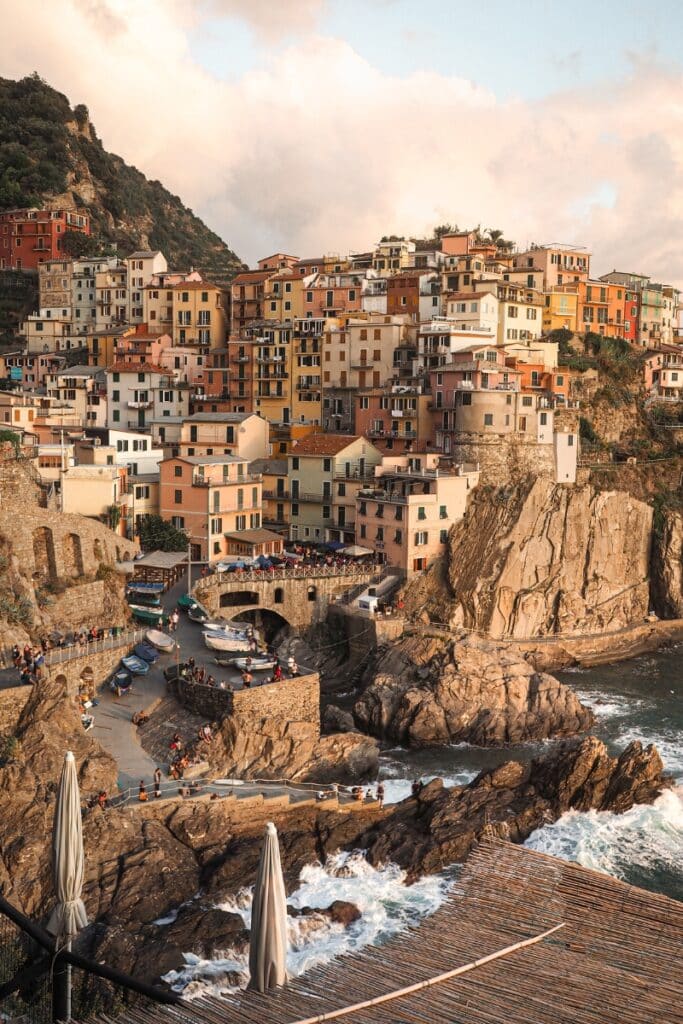
2. Live like a local.
Rent an apartment or stay in a homestay to fully experience the culture and give yourself more opportunities to mingle with local people and immerse yourself in local life.
3. Do your research.
Do your research ahead of time, but don’t over-plan your itinerary so you can truly embrace slow living. Ditching the box-ticking mentality of vacation planning will allow you to indulge in the slow movement and explore the local community at your own pace.
4. Plan for the off-season.
Travel during the off-season or shoulder season to avoid crowds and high prices.
5. Walk and wander.
Enjoy any relevant walking tours when you first arrive and wander on foot as much as you can to get a better sense of the destination and determine areas you wish to explore more.
6. Avoid Flights when possible.
If possible, choose public transport or driving over air travel to reduce your carbon footprint and see more of the scenery. When mapping out your next trip, be sure to include a few places that are within driving distance. Road trips are the best way to get a deeper understanding of the local landscape.
7. Join local communities.
Connect with locals by joining local communities and events or taking cooking classes or art classes. Taking a cooking class is also a great way for you to learn more about authentic local cuisine and immerse yourself in the slow food movement.
8. Cook authentic local cuisine.
Even if you don’t take a cooking class, shop at the local market for goods from local producers and try your hand at authentic recipes to bring the slow food experience into your travels.
9. Reserve days for doing nothing.
To truly practice the art of slow living during your travels, allow yourself days without anything planned on your next trip and let the day unfold naturally.
10. Seek hidden gems.
Avoid tourist traps and instead, seek out hidden gems recommended by locals. Local residents will not only know the best things to do but they can make personal recommendations to ensure you get a more authentic experience.
11. Pack light.
Pack light and bring only what you need to avoid feeling weighed down by your belongings. Becoming a slow traveler means embracing less is more.
12. Bring your daily routine with you.
Bring a sense of your normal life and routine into your experience. This means ditching the checklist mentality of rushing to see it all that many travelers embrace on vacation.
13. Reflect on your experiences.
Most importantly, take time to reflect on your experiences and appreciate the present moment. Slow traveling is not just about traveling slowly, but being more mindful in your daily routine.
Slow Travel Resources
If you’re ready to slow down and travel in a more balanced way, there are plenty of resources available to help you get started. Read on for the best slow travel books, blogs, magazines, podcasts, and tour companies so you can bring these slow travel principles into your trip and live more mindfully while you travel.
Best Slow Travel Books
Reading books about slow travel can provide numerous benefits for those who love to explore new places. These books can inspire readers to take a more leisurely approach to their travels, allowing them to fully immerse themselves in the culture and customs of the places they visit.
If you’re looking for some inspiration for your next slow travel adventure, consider picking up one of these top 5 books on slow traveling that are highly rated by slow travelers in the community.

Slow Travel: A Movement
By Penny Watson
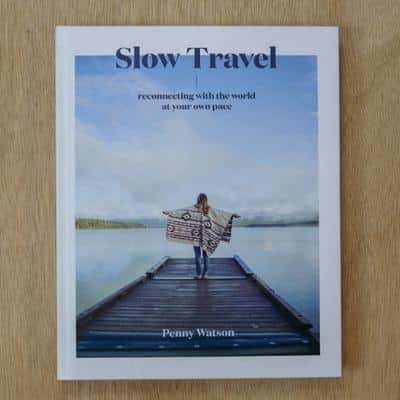
This book explores slow travel as a physical or philosophical endeavor, taking readers off the beaten track and through nature, and unveils meaningful and transformative journeys that will help you embrace the true beauty of slow traveling.
The book includes practical advice on places, activities, tours and experiences that will help readers get on the road and explore in a meaningful way. Whether you are looking for an immersive experience or just want to slow down and appreciate your surroundings, this book is sure to provide plenty of inspiration.
Unforgettable Journeys: Slow Down and See the World
By Joseph Reaney
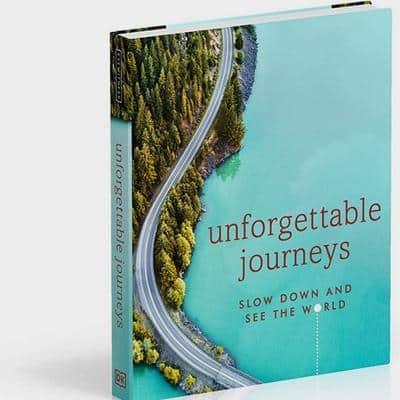
Ever dreamed of walking the Camino de Santiago, driving Route 66, or taking a luxury train through Europe? Sometimes it really is all about the journey, rather than the destination.
This book provides over 200 journeys illustrated with inspiring photography and maps including practical information such as journey duration, difficulty, start and end point, and if there are options to take an organized tour. Whether you’re looking for an exotic getaway or an off-the-beaten-path experience, this book will inspire your next slow travel vacation.
The Idle Traveller: The Art Of Slow Travel
By Dean Kieran
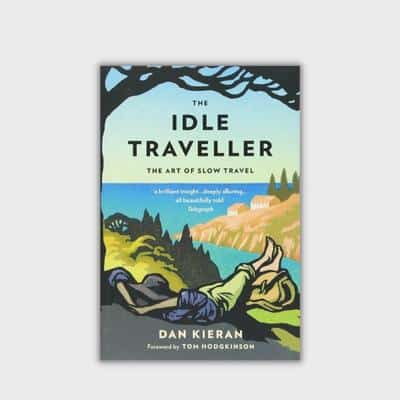
This book is all about embracing the joy of slow travel, encouraging readers to take their time and savor every moment of their journey. It advocates for taking night trains, buses, or other forms of transportation that allow for a slower pace of travel.
It also encourages staycation holidaying and re-assessing why we travel and what travel has become. This book has a little bit of everything from zen-like teachings to reviews from readers who have experienced the art of slow travel firsthand.
The Rings of Saturn
By W.G. Sebald

This classic travelogue takes readers on a meandering journey through East Anglia in England, exploring history, culture, and personal reflection along the way. Ostensibly a record of a journey on foot through coastal East Anglia, the book is also an allusive study of England’s history and its relationship to the natural world.
Through his observations and reflections, Sebald reveals how the past has shaped the present and how our actions today will shape our future. The novel is filled with evocative imagery and thought-provoking insights into human nature, making it an engaging read for anyone interested in history or literature.
A Year in Provence
By Peter Mayle
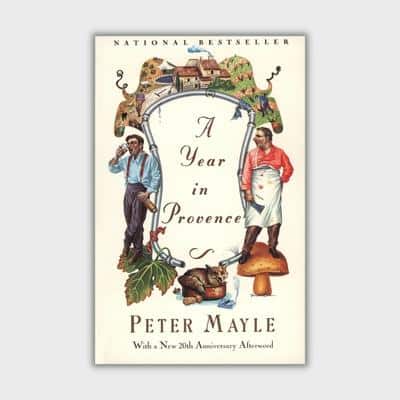
While not strictly about slow travel, this charming memoir chronicles Mayle’s experiences living in rural France for a year, immersing himself in the culture and taking things at a leisurely pace. In this witty and warm-hearted account, Mayle tells what it is like to realize a long-cherished dream and actually move into a 200-year-old stone farmhouse in the remote country of the Lubéron.
Best Slow Travel Blogs
One of the best ways to learn more about slow tourism is to stay up to date with slow travel blogs. For more inspiration to travel at a slower pace, check out these top 5 slow travel blogs.
Slow Travel Blog

This website offers tips and destination recommendations for those looking to travel at a more leisurely pace. From cultural experiences to outdoor adventures, you’ll find plenty of ideas here.
Travelinmad

This travel blog offers insights into the benefits of traveling slowly and how to do it effectively. You’ll find tips, ideas, and inspiration for your next trip. Travlinmad shares local food, culture, and traditional recipes from around the world. With a focus on slow travel, Travlinmad provides tips for exploring each destination in depth and discovering hidden gems that are often overlooked.
What If We Walked?

This unique blog focuses on hiking trails, city strolls, and other slow travel experiences. Founded by Luke & Nell, a couple slowly exploring the world on foot, What if we walked? offers readers the opportunity to join them on their journey through photos and blog posts. Whether you are looking for tips for your next visit or want to explore the most beautiful waterfalls in England, What if we walked? has something for everyone.
With its focus on the physical and mental health benefits of walking, What if we walked? is the perfect place to find inspiration for your next outdoor adventure. Follow along with the authors’ adventures and get inspired for your own journey.
The Broke Backpacker

The Broke Backpacker’s guide to slow travel offers practical advice on how to hack your travels to make them more meaningful and enjoyable. Learn how to ditch the tourist traps and embrace a slower, more authentic way of exploring the world.
The Broke Backpacker is the ultimate resource for budget travelers, offering tips and tricks for discovering the world on the cheap. From epic backpacking guides to in-depth gear reviews and hidden gems, The Broke Backpacker team is always on assignment to provide readers with valuable insights into budget travel.
Best Slow Travel Magazines
Slow travel magazines offer a unique perspective on travel that encourages readers to take their time and immerse themselves in the local culture. These magazines provide a wealth of information about off-the-beaten-path destinations, sustainable travel practices, and ways to connect with locals. By reading slow travel magazines, travelers can gain deeper insight into the places they visit and make more meaningful connections with the people they meet along the way. Additionally, slow travel magazines often feature stunning photography and engaging stories that inspire readers to explore new destinations and embrace a slower pace of life.
To learn more about slow traveling, here are five magazines that can inspire and guide you on your journey:
Kinfolk Travel
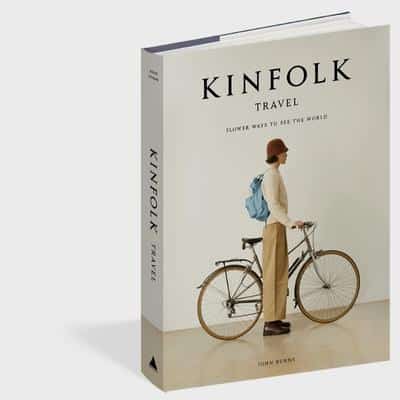
This hardcover book from Kinfolk magazine is dedicated to promoting sustainable and responsible tourism. It features articles on slow food, eco-friendly accommodations, cultural experiences, and off-the-beaten-path destinations.
The magazine also explores places, foods, customs, people, and events with intriguing or unusual stories to tell. With its focus on sustainable and meaningful travel experiences, Kinfolk Travel is a must-read for anyone looking to connect with the world in a more profound way.
Wanderlust Magazine
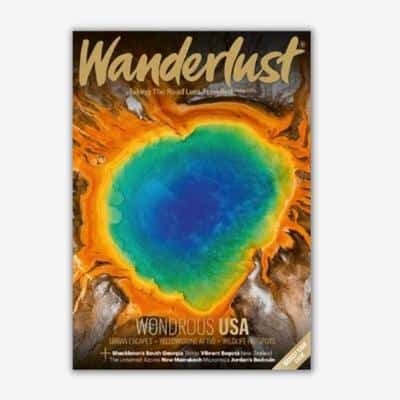
While not exclusively focused on slow travel, Wanderlust Magazine encourages readers to take a more mindful approach to travel. It covers a wide range of topics, from adventure travel to cultural immersion.
This UK-based travel magazine offers a wealth of information on destinations, travel advice, and cultural experiences. With its stunning photography and engaging articles, this magazine will transport you to some of the most beautiful and fascinating places in the world.
Mindful Travel Magazine
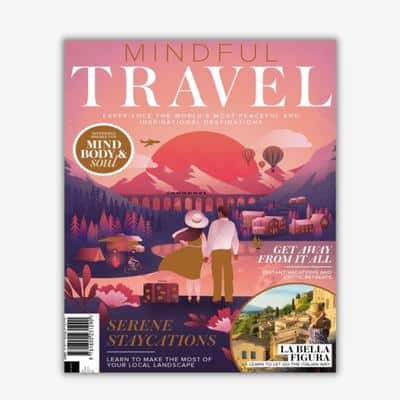
As its name suggests, this magazine promotes mindful and intentional travel. It features stories on sustainable tourism practices, wellness retreats, and eco-friendly accommodations.
Mindful Travel Magazine also covers the latest trends in meditation and wellness practices from around the world. Whether you’re looking for ways to connect with nature or learn about different cultures, Mindful Travel Magazine has something for everyone.
British Travel Journal Magazine
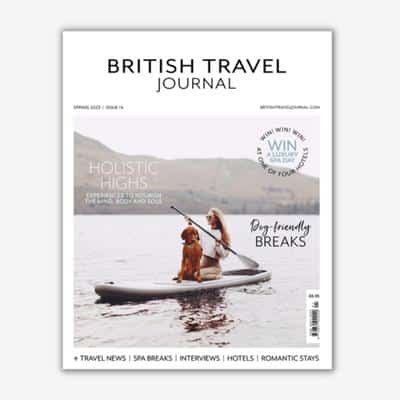
This magazine showcases the best of British travel destinations and experiences. While it doesn’t explicitly focus on slow travel, many of its articles highlight the beauty of taking your time to explore a destination.
It offers readers an array of inspirational destinations and travel ideas, making it the perfect companion for planning your next holiday in the UK. With three issues per year, British Travel Journal Magazine provides readers with a wealth of information on everything from hidden gems to must-see landmarks, all delivered in a visually stunning format.
Ultimate Travel Bucket List Magazine
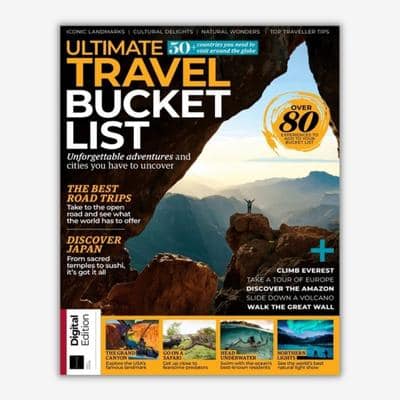
This magazine is all about inspiring readers to dream big when it comes to travel. While it may seem counterintuitive for a bucket list publication to promote slow travel, many of its featured destinations lend themselves well to a more leisurely pace. The magazine offers inspiration and practical advice to help turn your travel dreams into reality. From wine tasting in France to exploring ancient ruins in Greece, Ultimate Travel Bucket List Magazine is your go-to source for all things travel-related.
Best Slow Travel Podcasts
Slow travel podcasts offer a wealth of benefits to listeners who are interested in exploring the world at a more leisurely pace. These podcasts provide insights into the benefits of slow travel, including the opportunity to connect with local cultures and communities, reduce one’s environmental impact, and foster a deeper sense of mindfulness and relaxation while on the road.
By listening to slow travel podcasts, travelers can gain valuable tips and advice on how to plan their trips in a way that aligns with these values, as well as learn about new destinations and experiences that they may not have considered before. Overall, slow travel podcasts are an excellent resource for anyone who wants to explore the world in a more meaningful and sustainable way.
The Zero to Travel Podcast
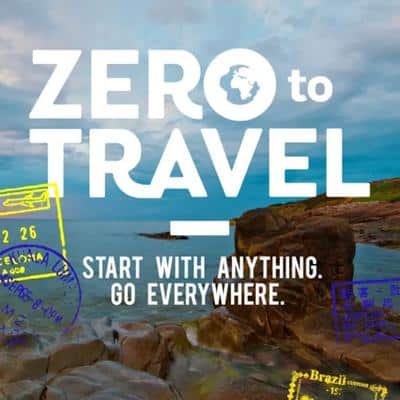
With over 10 million downloads and 600+ five-star reviews, this podcast is a must-listen for anyone interested in slow travel. Host Jason Moore shares tips and stories from his own travels, as well as interviews with other travelers who have embraced the slow travel lifestyle.
The Thoughtful Travel Podcast
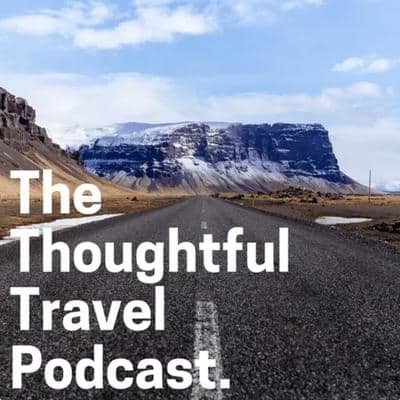
Hosted by Amanda Kendle, this podcast explores the deeper meanings behind our travels. From connecting with locals to confronting cultural differences, each episode offers insights into how travel can change us for the better. And of course, there are plenty of tips for slowing down and savoring each moment along the way.
Women Who Travel Podcast
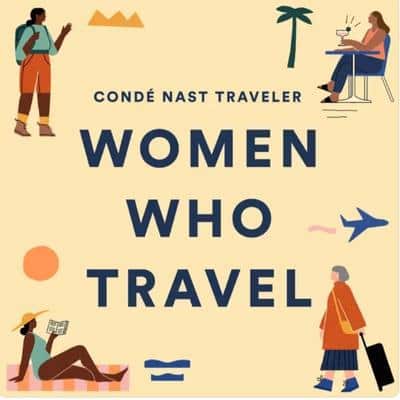
In this podcast from Conde Nast Traveler, hosts Meredith Carey and Lale Arikoglu explore all aspects of travel through a feminist lens. While not exclusively focused on slow travel, many episodes touch on the benefits of taking your time and immersing yourself in local cultures.
Armchair Explorer Podcast
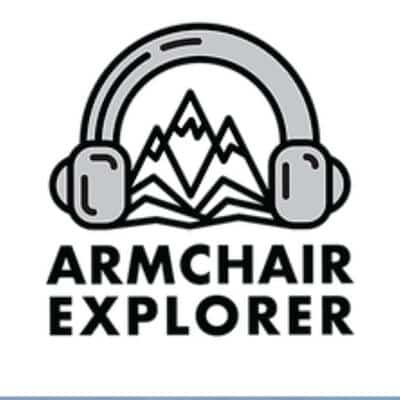
If you can’t hit the road right now but still want to indulge your wanderlust, check out this podcast from National Geographic. Each episode takes listeners on a virtual journey to a different corner of the world, with immersive soundscapes and expert commentary that will transport you to another place and time.
Best Slow Travel Tour Companies
If you’re looking for a more relaxed and immersive slow travel experience, but don’t know where to start, here are some of the best slow travel companies to consider.
Black Tomato

Offering slow travel vacations in top destinations, Black Tomato is a luxury travel company that’s great for those looking for unique and personalized experiences. Black Tomato plans slow travel vacations for individuals, couples, families, and groups.
With a focus on exceptional customer service and creating unique travel experiences, Black Tomato is a top choice for those seeking an extraordinary vacation.
Butterfield and Robinson

With the slogan “Slow Down to See the World,” Butterfield and Robinson is a luxury travel company that offers bespoke slow travel experiences all over the world. The company’s mission is to travel with integrity, have a positive impact, and gain a deep understanding of each and every destination.
With over 50 years of global trip planning expertise, Butterfield and Robinson designs, plans, and guides trips of a lifetime by bike, foot, or water. The company’s extended journeys offer multi-country itineraries that allow travelers to explore multiple destinations at their own pace.
Slow Tours Europe

Slow Tours Europe offers a huge range of tours in Europe for unique experiences that are both active and relaxing. Slow Travel Tours is another option for those looking for small group tours with a focus on cultural immersion, cooking and wine, photography, and more.
Slow travel is not just about the destination but also about exploring communities along the way, taking time to pause and appreciate the journey. Whether you’re a senior looking for a leisurely-paced tour or simply seeking a more mindful way to travel, Slow Tours Europe has something for everyone.
Remote Year

Remote Year is a great option for digital nomads looking to slow down their travels while still being able to work remotely. Remote Year offers the right balance of work and play so your next adventure never sacrifices your next career opportunity.
With options for 1-month, 4-months, or even a year-long programs, Remote Year provides housing, professional coworking spaces, and support for its participants. The program curates communities of interesting professionals, entrepreneurs, and freelancers from across the globe to travel together on retreats and trips. With over 80 destinations and 4,000+ members, Remote Year has become a favorite remote working community for many.
Surf Yoga Beer

Surf Yoga Beer is a group adventure travel company that creates fitness adventures worldwide, connecting people from all over the world through a mutual love for surf, yoga, and (you guessed it) beer.
This unique company offers an experience combining physical activity with socializing and relaxation. Whether you’re a beginner or an experienced surfer or yogi, Surf Yoga Beer has something for everyone. With its focus on community and wellness, this company provides a fun and exciting way to explore new destinations while also improving your health and well-being.
Byway Travel

Byway Travel is a unique travel company that offers sustainable and flight-free holidays. They believe in slow travel, taking the scenic route to local stays and off-the-beaten-path experiences. Byway Travel provides personalized trips by train, boat, and bus in the UK and Europe. As a certified B Corp, they are committed to sustainability and reducing their impact on the environment.
The adventures are designed for those who want to explore the world without relying on flights, making it an excellent option for eco-conscious travelers looking for an alternative way to see the world.
Slow Travel Frequently Asked Questions
What is an example of the slow travel movement?
The slow travel movement is a philosophy of traveling that emphasizes connection to local people, cultures, food, and music. It’s about taking the time to immerse oneself in a place and truly experience it, rather than rushing through a checklist of tourist attractions. An example of slow travel could be spending a month living in a small village in Italy, getting to know the locals, learning the language, and exploring the surrounding countryside at a leisurely pace.
How do I start slow travel?
If you’re looking to slow down and fully immerse yourself in a destination, slow travel may be the perfect fit for you. Here are some practical tips on how to start your slow travel journey:
1. Do your research: Before you go, do some research on your destination. Look for local events, markets, and festivals that are happening during your stay.
2. Get inspired: Read books or watch movies set in your destination to get inspired and learn more about the culture.
3. Know thyself: Slow travel is all about taking it easy and enjoying the journey. Be honest with yourself about what kind of traveler you are and what kind of experience you want.
4. Pick an accommodation with character: Instead of staying in a chain hotel, opt for a unique accommodation option like a local bed and breakfast or an Airbnb.
5. Travel like a local: Take public transportation or walk instead of renting a car to fully immerse yourself in the local culture.
6. Give up some “purpose”: Leave gaps in your itinerary so that you can explore at your own pace and discover hidden gems along the way.
7. Eat local: Try new foods and dine at local restaurants to fully experience the flavors of your destination.
8. Spend more time in fewer places: Instead of trying to see everything, focus on one or two destinations and spend more time there to really get to know the area.
9. Challenge your boundaries: Step out of your comfort zone and try new things like hiking, kayaking, or taking a cooking class.
10. Embrace spontaneity: Allow yourself to have days without anything planned and ask locals for their recommendations or their favorite things to do and see in the area.
Slow travel is all about taking it easy, embracing spontaneity, and fully immersing yourself in a destination. By following these tips, you’ll be well on your way to starting your own slow travel journey
What is slow travel and how do I embrace it?
If you’re tired of rushing from one tourist attraction to another and want to truly immerse yourself in a new culture, slow travel might be just what you need. Slow travel is all about taking your time, connecting with locals, and fully experiencing a destination. Here’s how you can embrace slow travel:
1. Stay in one place for longer: Instead of hopping from city to city, choose one destination and stay there for at least a week or two. This will give you the chance to really get to know the area and its people.
2. Travel by land: Slow travel often involves traveling by train, bus or car instead of flying. This not only reduces your carbon footprint but also allows you to see more of the countryside and smaller towns.
3. Immerse yourself in local culture: Take part in local activities such as cooking classes or language lessons. Attend festivals and events that are important to the community.
4. Eat locally sourced food: Slow travel is closely linked to the slow food movement, so make sure you try regional dishes made with fresh, locally sourced ingredients.
5. Disconnect from technology: Slow travel is all about being present in the moment, so put away your phone and take in your surroundings without distractions.
By embracing slow travel, you’ll not only have a more authentic experience but also reduce your impact on the environment and support local communities.
How is slow travel different from traditional tourism?
Traditional tourism often involves rushing from one attraction to another without taking the time to truly experience a place. Slow travel inspires travelers to take their time, stay in one place for longer periods of time, and really get to know a destination.
Slow travel allows travelers to experience life in a new place by engaging with locals, trying local cuisine, and exploring the natural environment. It also encourages travelers to be mindful of their impact on the environment and local communities.
Is slow travel more expensive than traditional tourism?
Not necessarily. Slow travel can actually be more affordable because it often involves staying in one place for longer periods of time, which can be less expensive than constantly moving around.
Can I still see all the major attractions if I’m traveling slowly?
Yes. Slow travel doesn’t mean skipping out on popular attractions altogether – it just means taking your time and really savoring each experience. When traveling slowly, you can still visit all the major attractions, but also have the opportunity to discover hidden gems.
You can interact with locals and learn about their culture and customs in a way that would be impossible if you were rushing through your trip. Slow travel gives you the chance to really get to know a place and its people on a deeper level.
How do I choose a destination for slow travel?
Choose a destination that interests you and has plenty of opportunities for cultural immersion and connection with locals. Slow travel is all about taking your time to explore a destination. With so many amazing places to choose from, it can be difficult to decide where to go. Here are some tips for finding the perfect slow travel destination:
1. Consider your budget
Slow travel doesn’t have to break the bank. Look for destinations that offer affordable accommodation and activities, such as camping or hostels.
2. Think about what you want to experience
Are you looking for a cultural experience? Or perhaps you’re more interested in outdoor activities? Consider what type of experiences you’re looking for when choosing a destination.
3. Research different destinations
Read up on different destinations and find out what they have to offer in terms of attractions, activities, and culture. Make sure the destination you choose has enough activities and attractions to keep you occupied during your stay.
4. Ask around
Talk to friends who have traveled before and get their advice on which destinations they would recommend for slow travel. They may even be able to provide helpful tips and tricks.
5. Don’t forget about safety
Safety should always be a top priority when traveling, especially if you’re going solo or with a small group of people. Research the safety protocols of each destination before booking your trip and make sure that it’s suitable for your needs.
No matter where you decide to go, slow travel is an amazing way to immerse yourself in a new culture and take your time exploring all that it has to offer.
What are some tips for traveling slowly?
Some tips include staying in one place for longer periods of time, using public transportation instead of renting a car, and seeking out local experiences like cooking classes or guided tours.
Is slow travel better for the environment?
Yes. Slow travel is often considered a form of sustainable tourism because it encourages travelers to take their time and reduce their carbon footprint by using public transportation instead of driving or flying.
Can families with children enjoy slow travel?
Absolutely. In fact, slow travel can be especially rewarding for families because it allows them to spend quality time together while experiencing new cultures and destinations. Slow travel is a great way for families with children to explore the world.
It allows them to take their time and build a deeper connection with the places they visit, while avoiding the stress of tight schedules and set plans. With slow travel, families can take the scenic route, get off the beaten track, explore their own backyard, and enjoy meaningful overseas experiences. There are also many benefits for children, such as taking pressure off them and allowing them to be more creative in their exploration.
How do I connect with locals while traveling slowly?
Some ways to connect with locals include staying in homestays or Airbnbs hosted by locals, attending cultural events or festivals, or simply striking up conversations with people you meet along the way. This allows you to get an authentic experience of the area and its people.
Is slow travel good for solo travelers?
Slow travel is an excellent option for solo travelers looking to explore the world in a meaningful way. Slow travel encourages travelers to take their time and really get to know the places they visit, rather than just checking off a list of tourist attractions. It allows for more meaningful interactions with locals and a greater appreciation for the culture of the place you’re visiting.
Solo travelers can benefit from slow travel by taking advantage of unique opportunities that may not be available when traveling with a group. For example, it’s easier to stay in one place for an extended period of time, allowing you to really get to know the area and its people. You can also take part in activities that require more flexibility or spontaneity, such as volunteering or taking unique day trips.
Overall, slow travel is an ideal way for solo travelers to experience new cultures and make meaningful connections with locals while exploring the world at their own pace.
Why is slow travel the best?
Slow travel is a growing movement that emphasizes taking your time to truly experience a destination, rather than rushing through it. Here are some reasons why slow travel might be the best way to explore the world:
1. Connection: Slow travel allows you to connect more deeply with the local people, culture, food, and music of a place. By taking your time and immersing yourself in the local community, you can connect with the destination on a deeper level.
2. Sustainability: Slow travel is often more sustainable than traditional tourism, as it involves staying in one place for longer periods of time and supporting local businesses.
3. Relaxation: Slow travel is all about taking it easy and enjoying the journey. By slowing down and savoring each moment, you can reduce stress and enjoy a more relaxing vacation.
4. Authenticity: When you rush through a destination, you often only see the tourist highlights. Slow travel allows you to discover hidden gems and experience a more authentic side of a place.
So if you’re looking for a more meaningful way to explore the world, consider embracing slow travel on your next trip.



